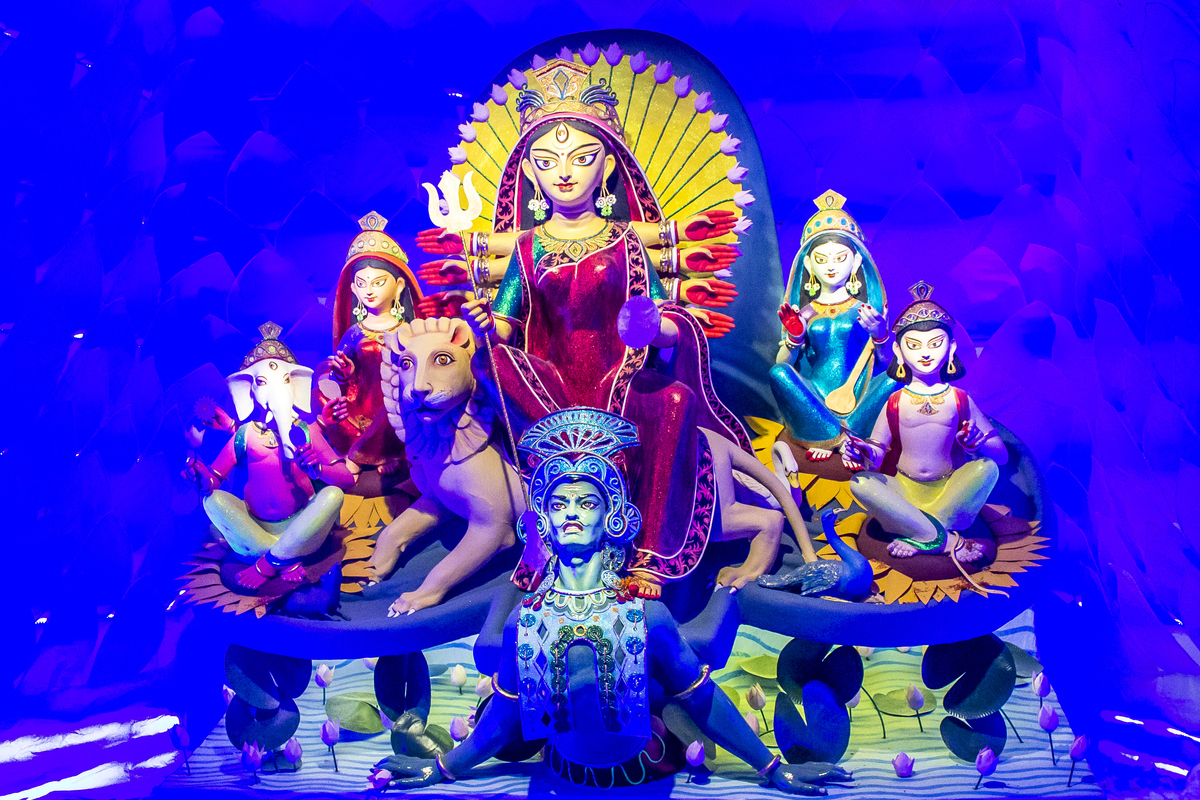Bhumi Pednekar honored as Young Global Leader at World Economic Forum
Bollywood star Bhumi Pednekar recognized as a Young Global Leader by the World Economic Forum, dedicated to driving positive change.
Indeed, low female literacy rate is said to have a dramatically negative impact on population stabilization programmes in the country.

It is believed that Goddess Durga begins her journey to her maternal home on Earth from Mount Kailash after Mahalaya. (Photo: iStock)
Even as the country gets set to celebrate StreeShakti (woman power), in the form of goddesses Durga or Kali, there continues to be a willful disdain for the female of the species, particularly amongst a class of men that considers its masculinity to be a vehicle for oppressing the very power that is worshipped. For all the bluster around development, the World Economic Forum’s 2018 Global Gender Gap Report, measured across four key pillars ~ economic opportunity, political empowerment, educational attainment and health and survival ~ places India at the lowly 108th position out of 149 countries and falls to abysmal levels on other scores.
There is the horrific rape record for starters, accounting for around 12 per cent of crimes against women, with legislators and godmen featuring prominently amongst the accused.
The pervasive social, psychological, physical and economic oppression that haunts women (constituting 48 per cent of the population) apart, there is also the humungous waste of human resource that women in this country represent.
Advertisement
India stands amongst the worst performers in female labour force participation; less than a third of women above the age of 15 work or actively look for jobs; the fairer sex certainly running a losing race in a developing India and receiving a much smaller share of post-Independence benefits. No surprise then that India falls to the 140th position in the WEF economic opportunity and participation.
Elsewhere, so deep-rooted is the antagonism against women that more than seven decades of Independence have not been able to stop female foeticide with the country guilty of one of the world’s worst records.
This accounts for female child population in the 0-6 age group declining from 78.83 million in 2001 to 75.84 million in 2011 and the child sex ratio (0-6 years) dropping from 945 to 914 between 1991 and 2011. Equally pathetic is the female child mortality record with upwards of 239,000 under-five girls dying each year.
The literacy record gives no joy either, with 65 per cent literacy amongst women, against 80 per cent in men, which augurs poorly for women-managed Indian households.
Indeed, low female literacy rate is said to have a dramatically negative impact on population stabilization programmes in the country.
To its eternal shame, India stagnates at the third-lowest position in the world on health and survival and remains the world’s least-improved country on this WEF sub-index over the past decade; the report ruing that in fact, “India actually widens the gender gap on this sub-index this year”.
Notwithstanding islands of practised corporate gender neutrality or instances of remarkable entrepreneurship and even scholarship amongst women, the reality is shocking for the ordinary Indian woman.
As the country enters matripakshya (phase to worship the mother) and celebrates the devi (goddess) as the vanquisher of the devil, it is time that society, as a whole, pauses to ponder this dichotomy between thought and deed, between the devi as the idol and the devi in flesh and blood and why the reality should be so blood-curdling.
Advertisement